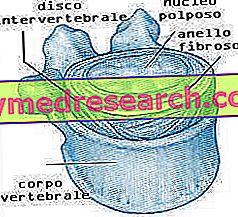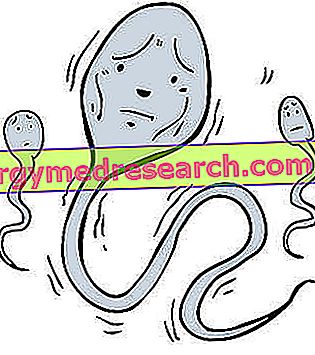Definition
Thrush is a fairly common oral cavity infection caused by fungi belonging to the genus Candida.
Also called pseudomembranous candidiasis or candidosal stomatitis, thrush appears as an acute infection, although it may persist for quite long periods in patients who frequently use antibiotics, cytotoxics and corticosteroids.
Causes
The thrush especially prefers newborns (especially those born prematurely with mothers suffering from vaginal candidiasis) and the elderly: when it occurs in the young adult, an underlying HIV infection is suspected. Thrush also affects immunocompromised subjects (lymphomas, drug abuse, chemotherapy, corticosteroid intake).
Symptoms
The disease begins with a diffuse redness inside the oral cavity: the mucosa becomes smooth and painful. A few days later, white spots form on the tongue and mucosa, with the typical appearance of ricotta, sometimes responsible for pain / discomfort, alteration of the taste of food and difficulty swallowing.
Natural Care
Diet and Nutrition
Information on Lily of the valley - Medicines for the treatment of thrush is not intended to replace the direct relationship between health professional and patient. Always consult your doctor and / or specialist before taking Lily of the valley - Medicines for Lily of the Valley treatment.
drugs
As analyzed for candidiasis in general, also the thrush can be treated with azole drugs (flucoazole, itraconazole, miconazole) and polyenics: generally, these substances exert in an excellent way their own activity for topical application but, when the subject does not respond so positive for treatment, oral medication is recommended.
In the case of mild thrush, it is possible to use mouthwash based on hydrogen peroxide (3%) or alkaline substances (sodium borate or sodium bicarbonate).
Among the most commonly used antimycotic drugs for treating lily of the valley are:
AZOLIC DRUGS
- Fluconazole (eg Diflucan): it is an antifungal antibiotic used both for generalized candidiasis and for thrush. For oropharyngeal thrush, the recommended dose is 200 mg on the first day, followed by 100 mg once a day. The duration of treatment is established by the doctor: in any case, in general, the treatment is one week (in order to prevent recurrences, the treatment can be extended up to 2 weeks).
- Itraconazole (eg Sporanox): is an azole drug that acts as an antifungal, interfering with the formation of the cell membrane of the fungus. Generally, it is administered in the form of an oral suspension or tablets: in the case of oropharyngeal candidiasis, 200 mg are administered orally once a day for one or two weeks, respecting what is prescribed by the doctor.
- Miconazole (eg. Daktarin): for oropharyngeal candidiasis, before going to bed, it is recommended to apply a 50 mg miconazole tablet near the upper gum, leaving it to act until the following morning. Repeat the application for 14 consecutive days. Miconazole is particularly indicated for oral thrush, and its activity appears to be even better than amphotericin B and nystatin (polyenics).
POLYENIC DRUGS
- Amphotericin B (eg Abelcet): for the treatment of oral fungal infections, Amphotericin B is generally administered at a dose of 0.25-0.3 mg / kg per day for a period ranging from 2 to 4 days.
- Nistatin (eg Mycostatin), in addition to being used to treat esophageal and intestinal candidiasis, is a drug particularly indicated for the treatment of thrush. The administration of 500.00 IU tablets of nystatin per ml (or 100, 000 IU / ml oral suspension) is recommended four times a day (every 6 hours). The duration of therapy must be established by the doctor.
echinocandins
As an alternative to Amphotericin B, echinocandins excel their anti-Candida activity excellently for the treatment of thrush.
However, polyene and azole drugs are preferable for treating lily of the valley.
NB in case of administration of antibiotics against thrush, it is preferable to take lactic ferments both during the therapy and during the week following the drug withdrawal, in order to rebalance the gastrointestinal bacterial flora altered by the antibiotic.
Most of the drugs listed above require a prescription.
In the case of lily of the valley, it is also recommended to follow a correct diet, avoiding excessively sweet foods: abundant sugary amounts in the saliva can favor the appearance of the lily of the valley.



